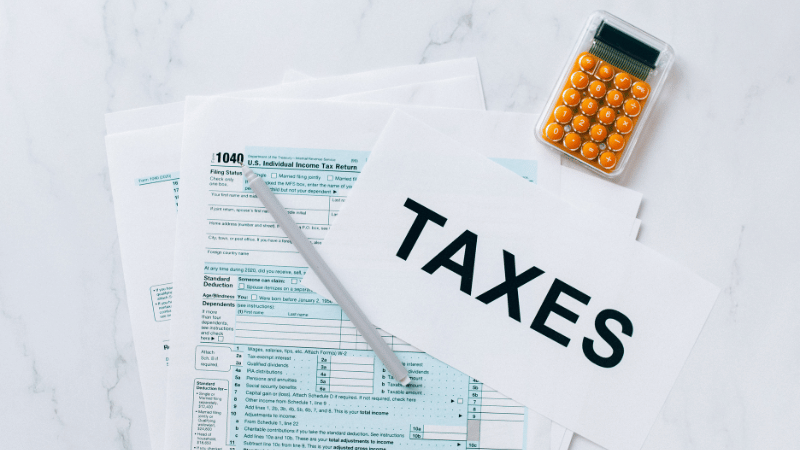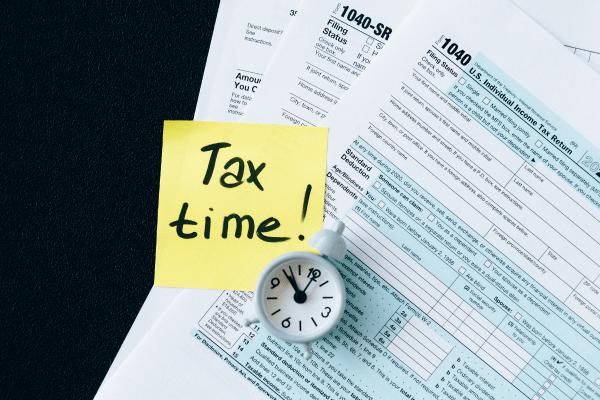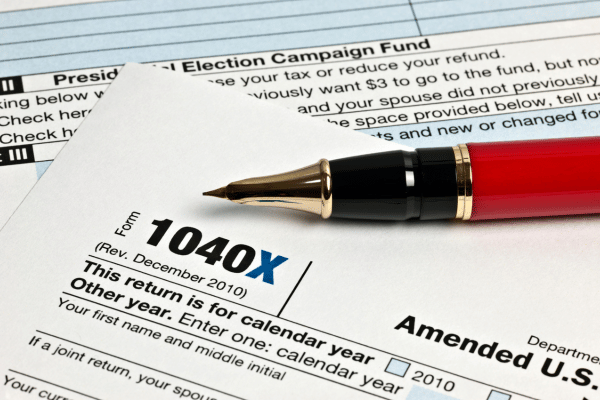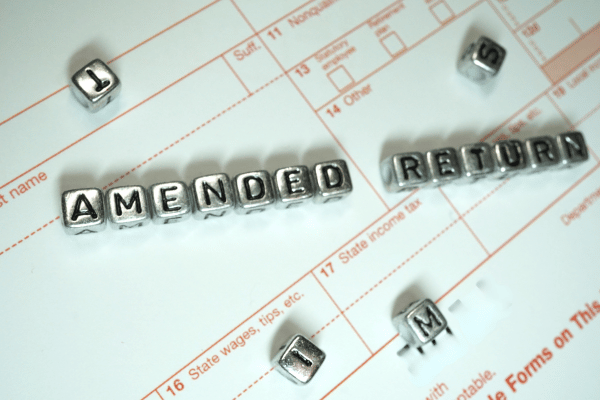How Many Years Back Can You Amend a Tax Return: Understanding the Time Limits

What happens if you discover a mistake after filing your taxes? Will the IRS impose penalties immediately? Fortunately, you have the option to file an amended tax return. But how does this process work, and how long do you have to correct your oversight before facing potential fines? In this article, we’ll explore the time limits for filing an amended return.
What is a Tax Return Amendment?
A tax return amendment, or amended return, is a form filed by taxpayers (individuals or entities) to correct errors in a previously filed tax return. The Internal Revenue Service (IRS) requires those who intend to amend their taxes to complete Form 1040-X, which is available on the IRS website. You can choose to file an amended return electronically or via paper.
Form 1040-X can be used to:
- Make changes to Form 1040, 1040-SR, or 1040-NR
- Make certain elections after the initial tax return filing deadline
- Adjust amounts previously modified by the IRS
- Claim a loss or unused credit
Valid reasons to file an amended tax return include changes in:
- Filing status
- Tax liability
- Dependents
- Credits
- Deductions
- Income
You don’t need to file an amended return if the IRS notifies you that they’ve corrected errors on your tax return or if they accept your return without requesting additional schedules or forms.
How Many Years Back Can You Typically Amend a Tax Return?

To be eligible for a tax refund, you must file an amended tax return within specific time limits. The IRS allows you to file an amended return:
- Within three years from the original due date of the return, or
- Within three years from the date you filed the original return (if filed after the due date), or
- Within two years from the date you paid the tax, whichever is later
For example, if you filed your 2019 tax return on March 15, 2020, you would have until April 18, 2023, to file an amended return and claim a refund. This three-year window provides some flexibility, so you don’t necessarily have to rush to file an amended return immediately after discovering an error. However, it’s important to note that if you exceed these time limits, the IRS is not obligated to issue a refund.
What are the Exceptions to the 3-Year Rule?
While the 3-year rule is standard, there are several exceptions that may extend the time limit for filing an amended return:
- IRS Agreement: If you’ve agreed in writing with the IRS to extend the time limit for assessing tax, the deadline specified in your agreement applies.
- Presidentially Declared Disasters: If you’re affected by a Presidentially declared disaster, you’re granted up to an additional year to claim a refund or credit.
- Military Service: If you served in a contingency operation or designated combat zone, you may have additional time to claim a refund or credit, provided you meet specific requirements.
- Financial Losses: For claims related to worthless security losses or bad debt reductions, you have up to seven years from the original return due date to file an amended return..
What is the IRS Form 1040-X?

Form 1040-X is the official IRS form used for filing amended tax returns. You can submit this form electronically or by paper. Even after a tax year has ended, you can file an amended return using Form 1040-X as long as you’re within the prescribed time limits.
Key points about Form 1040-X:
- Information required:
- Original tax return details (deductions, income, credits)
- Proposed changes
- Refund amount (if applicable)
- Calculation method: Many taxpayers find it helpful to mark changes directly on a copy of their original return to determine the correct amounts for Form 1040-X.
- Tax recalculation: You’ll need to determine the correct tax based on your revised taxable income and any amount you may owe.
- Separate forms: You must complete a separate Form 1040-X for each tax year you’re amending.
Remember, accurate completion of Form 1040-X is crucial for the proper processing of your amended return.
Why Would Someone Need to Amend a Tax Return from Previous Years?
Taxpayers file amended returns for various reasons related to their individual income tax returns. Common reasons include:
- Correcting errors: Fixing mistakes made on the original return.
- Overpayment adjustment: Reclaiming tax paid in excess of what the tax code required.
- Claiming overlooked credits or deductions: Seeking additional refunds for eligible items not originally claimed.
- Declaring additional income: Reporting income that was omitted from the original return.
- Changing filing status: Switching between individual, joint, or other filing statuses.
- Modifying dependents: Adding or removing dependents from the tax return.
- Updating forms: Changing information on previously filed forms.
These amendments ensure that your tax records accurately reflect your financial situation and help you receive the correct tax treatment.
What are the Benefits of Amending an Old Tax Return?
Despite the additional paperwork involved, amending an old tax return can offer several advantages:
- Financial gain: You may receive additional funds if you’re eligible for previously unclaimed credits or deductions.
- Error correction: Fixing mistakes on your original return can help you avoid potential penalties or reduce existing ones.
- Legal compliance: Amending returns ensures you’re following the tax code, which is crucial as non-compliance can result in:
- Expensive fines
- Potential legal consequences, including jail time in severe cases
- Peace of mind: Knowing your tax records are accurate and compliant with tax laws can provide reassurance.
- By amending your return, you’re taking proactive steps to maintain your financial and legal standing with the IRS.
How Do You Amend a Tax Return from Previous Years?
To amend a return, follow these steps:
- Complete Form 1040-X:
- Available on the IRS website
- It can be filled out electronically using tax software or manually
- Submit supporting documentation:
- Include the same documentation and schedules as your original tax return
- Ensure all documents are relevant to the tax year indicated on Form 1040-X
- Filing limits:
- You can file up to three amendments for the same tax year
- Refund options:
- Additional refunds can be received via direct deposit or paper check
- Processing time:
- Typically, it takes 8 to 12 weeks
- It may extend up to 16 weeks in some cases
- Track your amendment:
- Check the IRS processing status dashboard for updates on your amended return
Consequences of Missing the Filing Deadline
Failing to file an amended return within the prescribed time limits can have several negative consequences:
- Loss of potential refunds: You may forfeit any additional funds you would have been entitled to receive.
- Overpayment retention: Any excess tax you paid to the IRS will not be refunded if you miss the deadline.
- Processing complications: The IRS may face challenges in accurately processing late amendments, potentially leading to:
- Errors in your tax records
- Delays in resolving tax issues
- Difficulty in correcting mistakes made by the IRS
- Ineligibility for extensions: Standard filing extensions typically don’t apply to amended returns, further limiting your options.
It’s crucial to be aware of these potential outcomes and strive to file your amended return within the specified time frame to avoid these issues.
Can You Amend a Tax Return Online?

Yes, you can amend a tax return online. Here are the key points to remember:
- Electronic filing: You can use tax software to electronically file an amended return.
- Documentation requirements:
- Submit the same forms and documentation as your original tax return
- Ensure all documents are relevant to the tax year being amended
- Filing limit: You can file up to three amended tax returns for the same year.
- Process:
- Complete Form 1040-X through your chosen tax software
- Follow the software’s instructions for submitting supporting documents
- Submit the amended return electronically
- Verification: After submission, confirm that the IRS has accepted your electronic amended return.
Remember, while online filing is convenient, it’s crucial to double-check all information before submitting to ensure accuracy.
File Tax Return Amendments with Professional Help
Navigating an amended return can be complex, especially when dealing with:
- Foreign tax credits
- Specialized deductions
- Intricate tax code nuances
Don’t leave money on the table or risk costly mistakes. Partnering with a tax professional can help you:
- Maximize your refund potential
- Avoid penalties and errors
- Ensure a complete and valid amended return
- Save time and reduce stress
Our team of experienced CPAs and tax experts specializes in:
- Identifying overlooked credits and deductions
- Navigating complex tax situations
- Ensuring full compliance with IRS regulations
Why struggle alone when expert help is just a click away?
Take the first step towards tax confidence today:
- Sign up for a free consultation
- Learn how we can optimize your amended return
- Discover potential savings you might have missed
Don’t wait – the clock is ticking on your ability to amend. Contact us now to secure your financial future and peace of mind!
FAQs
Can I amend a tax return from 5 years ago?
You can usually only file an amended return within three years. However, it might be possible for you to file older amended returns if you fall under the exceptions granted by the IRS.
How far back can you amend a tax return?
Usually, the IRS gives up to three years to file a federal amended return. However, you might be eligible for an extension under certain exceptions. It would be ideal to file an amended return sooner than later to avoid penalties or complications.
What is the statute of limitations for amending returns?
In most cases, the IRS gives a three-year time limit to submit amended returns. This Rule applies to everyone unless they fall under the exceptions granted by the IRS. It’s recommended to file within the time limit to avoid penalties or complications.
Does amending taxes trigger an audit?
The same audit selection process occurs whenever you file an amended return. You won’t necessarily get audited just because you filed an amended return. However, it is still possible.
Can I amend a return that is more than three years old?
You can only amend a return over three years old if you fall under the exceptions that the IRS grants. Otherwise, you forfeit the returns or don’t get your money back.
How much does it cost to amend a tax return?
There is no fee for amended returns if you file the forms yourself. However, you might have to pay a fee if you enlist a CPA or tax software to do this on your behalf. Thus, it’s cheaper to do this by yourself.
Is there a penalty for amending your taxes?
If you file before the due date, you won’t have to pay a penalty. However, the amended tax return should have been submitted first. This rule doesn’t apply to those the IRS has audited.